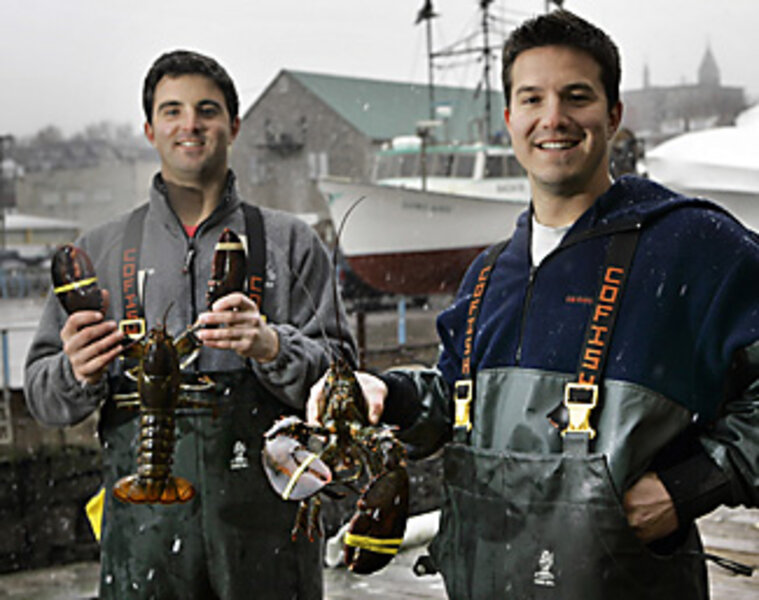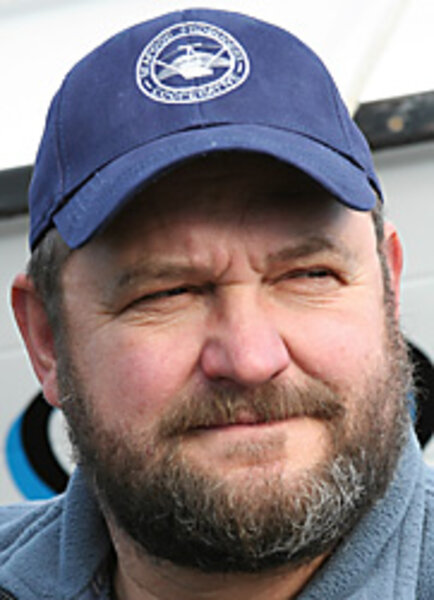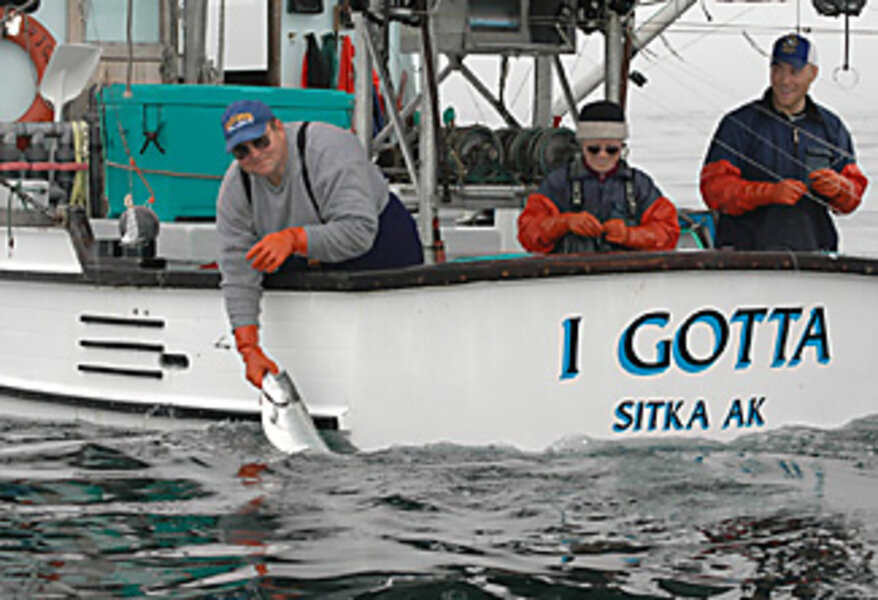Small fishermen borrow a page from small farmers
Loading...
On Saturday night, men in thick winter jackets hoist shrimp out of the icy waters of the Gulf of Maine. Most of the shrimp haul goes to a processor three hours away; some shrimp travel as far away as the Carolinas. But early Sunday morning, co-op manager Kim Libby drives a few miles down the road to a snowy parking lot, where she delivers the catch directly to locals. These customers have paid for a portion of the catch in advance.
"Here's hoping that we can sell all of our product like this one day," she says.
By eliminating processors and purveyors, the Port Clyde Draggermen's Co-op hopes to increase the return on its shrimp, a staple for winter groundfishing boats in the state. The tiny crustaceans have been selling for less than 50 cents a pound. By going direct to consumers, the co-op is essentially trying to make more money selling less seafood – and, in the process, they're hoping to reverse an industry in steep decline.
In addition to federal lawsuits and grants, smaller commercial fishermen using direct marketing to stay afloat. At least four fishing groups started similar initiatives last year.
Two Maine brothers, John and Brendan Ready, sell subscriptions of lobster and other seafood under the name Catch a Piece of Maine. Their 150 subscribers receive shipments and can even go online to check on the status of their underwater investment.
In Alaska, the nonprofit Alaska Marine Conservation Council sends its donors tangible evidence of its environmental initiatives: sustainably harvested seafood. Marketing campaigns have also been launched to promote the regions' seafood, including North Carolina's Carteret Catch and New Orleans' White Boot Brigade. [Editor's note: The original version misidentified the White Boot Brigade.]
These community-supported fisheries (CSFs) attempt to replicate the success of small farmers using the community-supported agriculture (CSA) model. Like CSAs, the idea is that shareholders will invest at the beginning of the season with guaranteed return of food dividends all season long.
"You're getting food from someone you know. You know how they grow it, you know how they treat it," says Anne Burt, an organizer with the Maine Council of Churches, which has been organizing CSAs with the Maine Organic Farming and Gardening Association.
The CSA model originated in Japan as teikei (literally "cooperation") and first came to the United States in 1986 in the midst of a long, steady decline in small family farms in America. Now, an estimated 1,500 CSAs operate in the US, according to Nichole Nazelrod at the Robyn Van En Center at Wilson College in Chambersburg, Pa. Many of them are new farms. In fact, over roughly the same period the number of small farms appears to have grown, according to US Department of Agriculture databases. Some organizers hope community support will reverse declines in family-owned commercial fishing vessels in oceans that are increasingly considered depleted. By some estimates, the world's fisheries are 80 percent depleted.
"Thirty years ago, we all thought, we'd never clean everything up," never catch all the fish in the ocean's seemingly infinite bounty. "But we've done a pretty good job," says Port Clyde fisherman Glen Libby. "Now, we're in the process of trying to save what we have left."
Others who are studying the industry, such as Maine's Island Institute and Susan Andreatta, a professor of anthropology at the University of North Carolina, Greensboro, say that with the loss of sea life, knowledge about fishing grounds that is passed on from generation to generation will also be lost by the time fish stocks rebound – if they rebound at all.
Given the rising cost of waterfront land, soaring costs for fuel and nets, and tighter and tighter fishing quotas, the commercial viability of fishing has been waning for years.
"Their challenge is just like [that of the] small family farmer," says Eric Siy, executive director of the Alaska Marine Conservation Council. "Big corporate interests are edging them out, driving up costs, and consolidating opportunity. We've seen a major crippling of the ability of community-based fisherman to be able to compete."
Consumer awareness about fisheries has begun to change with more frequent reports of mercury in tuna, overfishing in Europe, and fish farmed in suspect Asian waters. The federal government has responded by ordering mandatory country-of-origin labeling. Others, like North Carolina's Carteret Catch, have spurred regional recognition of food that up to now had been largely reserved for fancy European wines and cheeses.
"When you drive 300 or 400 miles to the coast, and you're eating shrimp that you think is right out of the local water, and instead you're getting imported shrimp – I just think that's wrong," says Dr. Andreatta. She has advocated labeling for fish caught in Carteret County at restaurants and fish houses.
While CSFs universally aim to better educate the consumer, there are regional and individual interpretations of what it means to be economically fair, develop the community, and maintain the ocean's ecology. "We're doing everything we can to be stewards of the sea," Maine's Kim Libby says. "In the fishing industry, that's a brand-new dynamic."
Others argue that all groundfishing – essentially dragging nets across the ocean floor – is inherently an unsustainable practice. In Southeast Alaska, it's banned. None of the CSF groups have received the coveted certification on sustainability from the Marine Stewardship Council, an international nonprofit group.
Still others say there are too many ways to measure "sustainable" seafood. Until proposed rules are released, about the only thing fishermen cannot do is call seafood "organic" (the USDA is expected to rule on organic "wild captured aquatic animals" in August 2008, according to one recent prediction).
More than certification, fishermen say going to consumers has fostered an increased sense of responsibility and pride. "We're passionate about these fish," says Eric Jordan, a lifelong Sitka fisherman whose trolled chum salmon go to Alaska's Catch of the Season. "The real reward is in hearing from your satisfied customers." [Editor's note: The original version misidentified a type of salmon.]
But the efforts are hindered because some fishermen don't want to talk to customers, especially after eight hours on the water. Others say expecting home cooks to process raw, whole, head-on fish – gutting and scaling – isn't realistic. Furthermore, red tape associated with processing licenses is prohibitive for independent producers.
Maine organizer Burt says consumers in Rockland this year needed to invest more than money. "They really have taken a leap of faith to make this happen. It was not an easy sell – not like a bunch of carrots."
Still, with burgeoning interest in locally grown foods and farmers' markets, the community-supported fisherman might be a concept that will catch on. "It really isn't just about these 15 men and these 10 small boats," says Nancy Carter, an organizer with the Island Institute, which is providing funding for a marketing coordinator at the Port Clyde CSF. "It's about all these people that are aware about global warning and carbon footprint and make decisions about what they eat so they can sleep at night."







